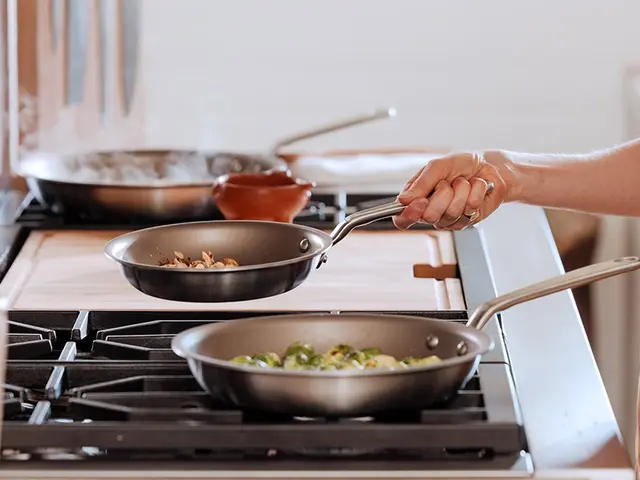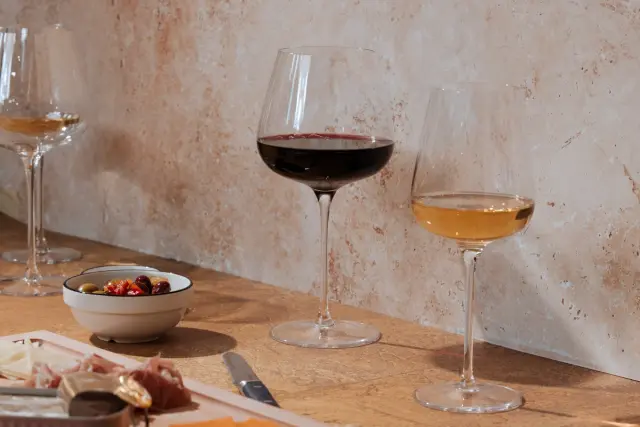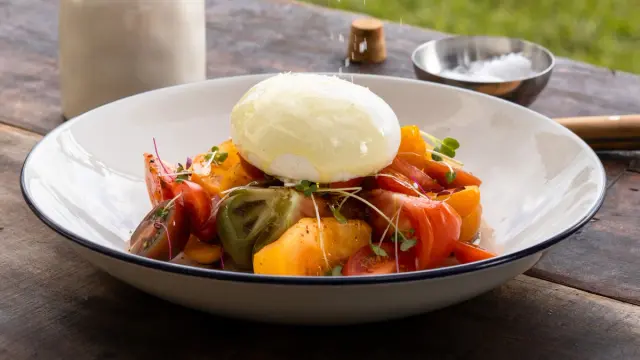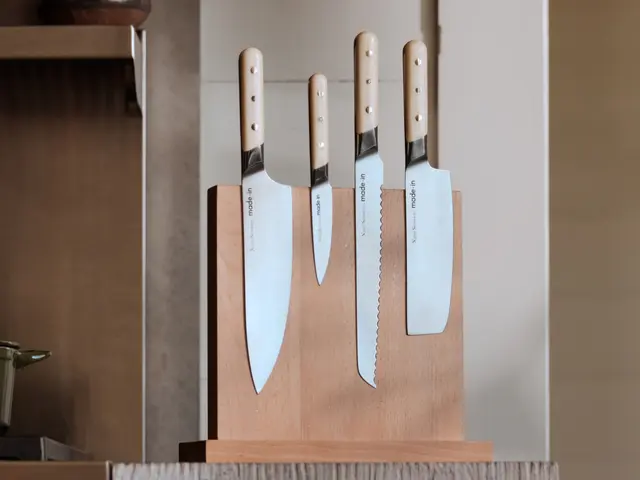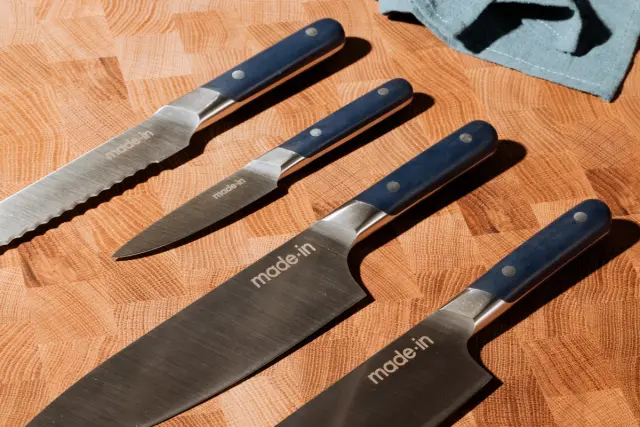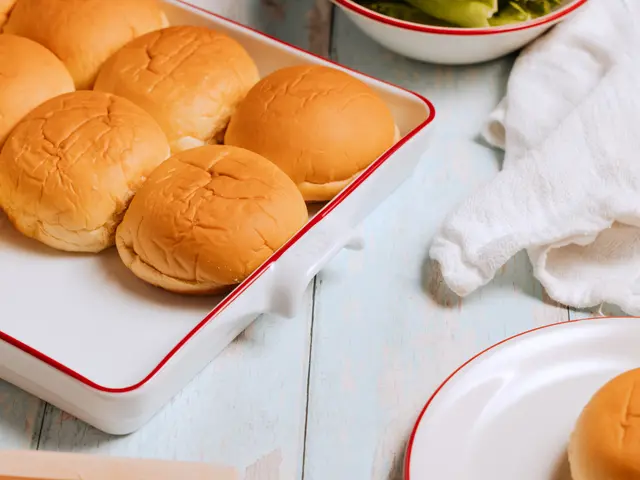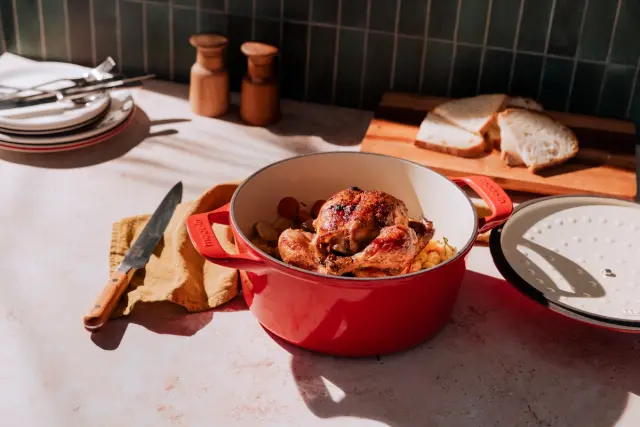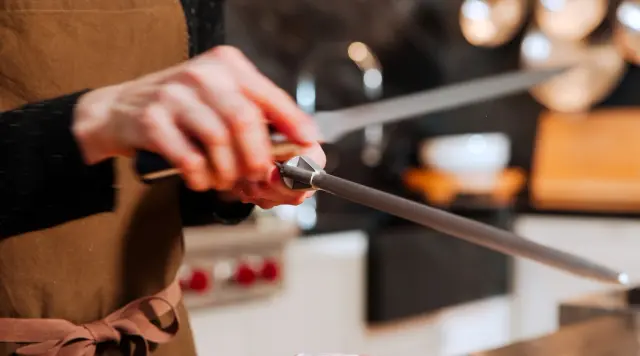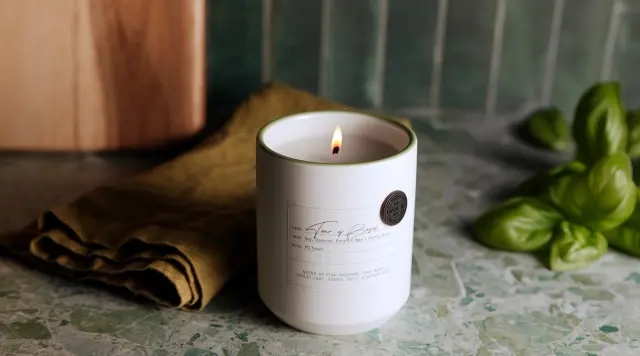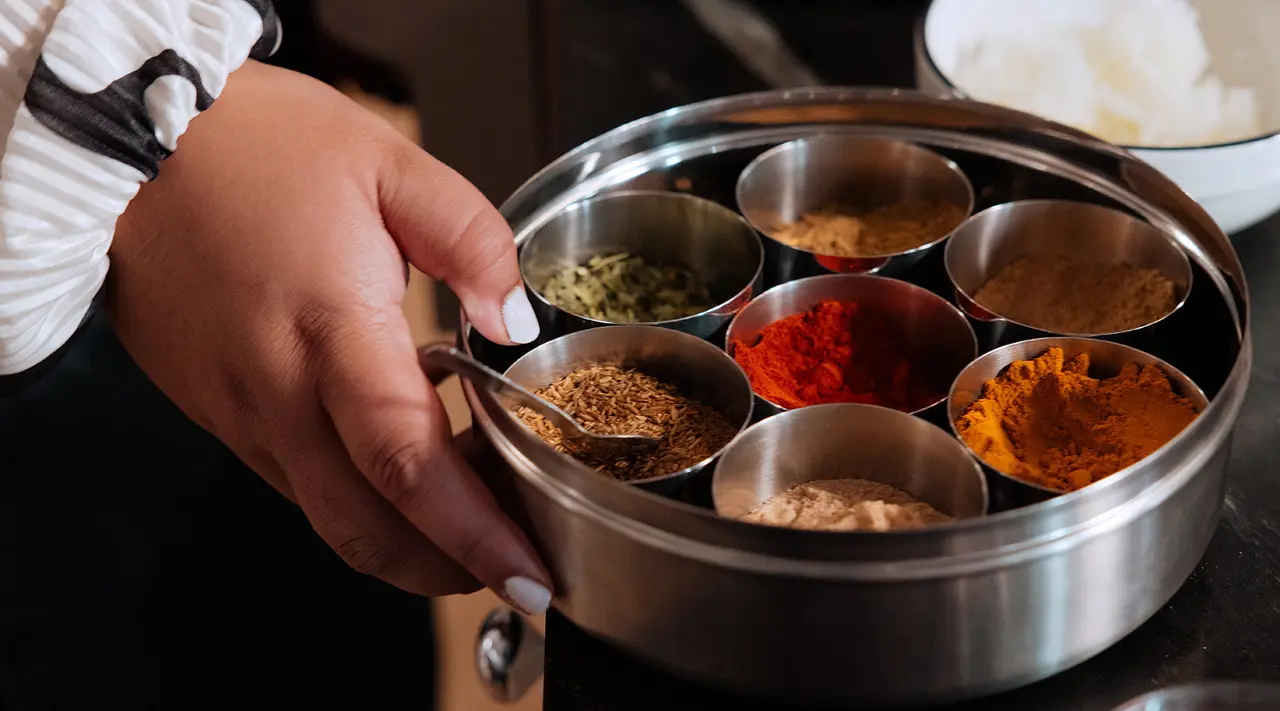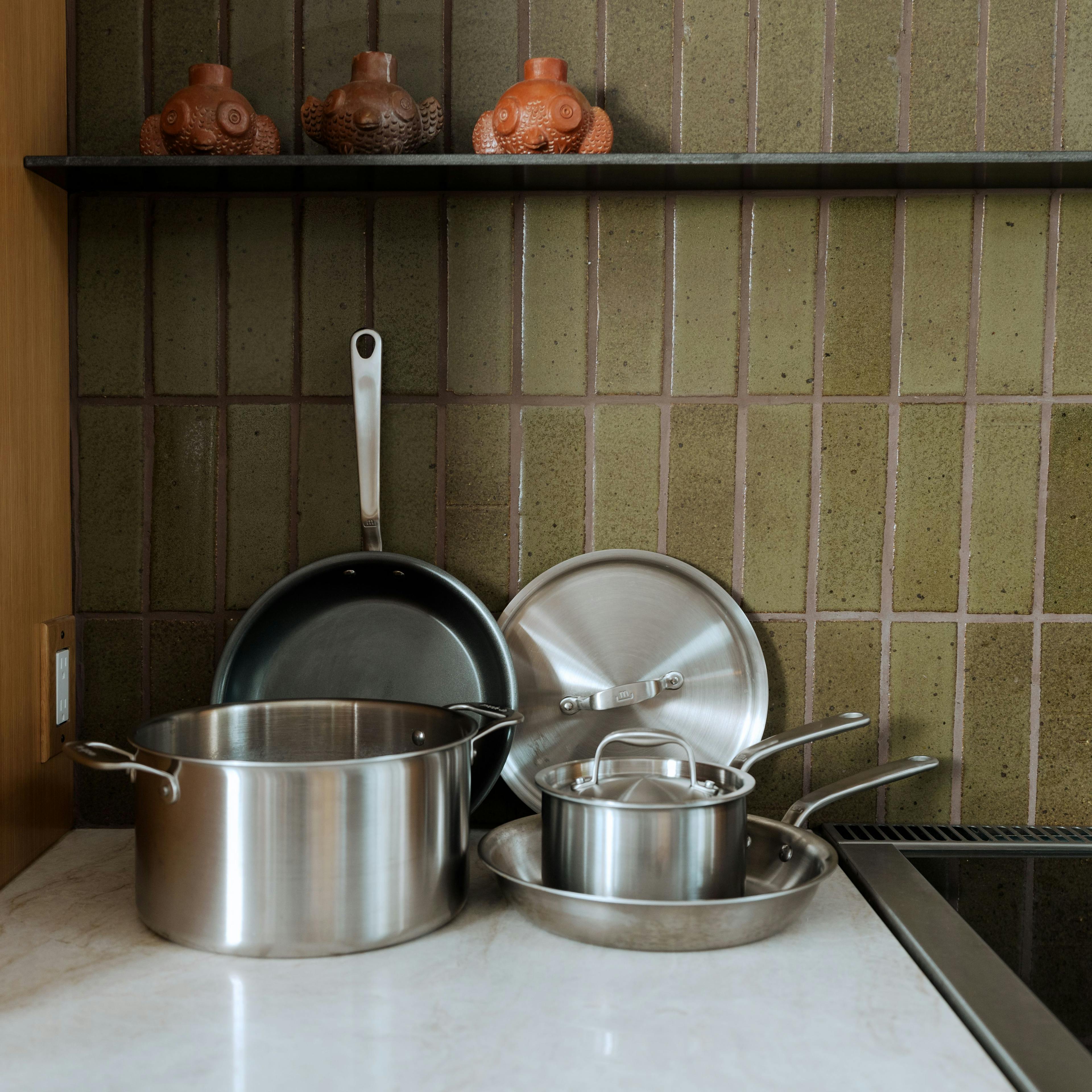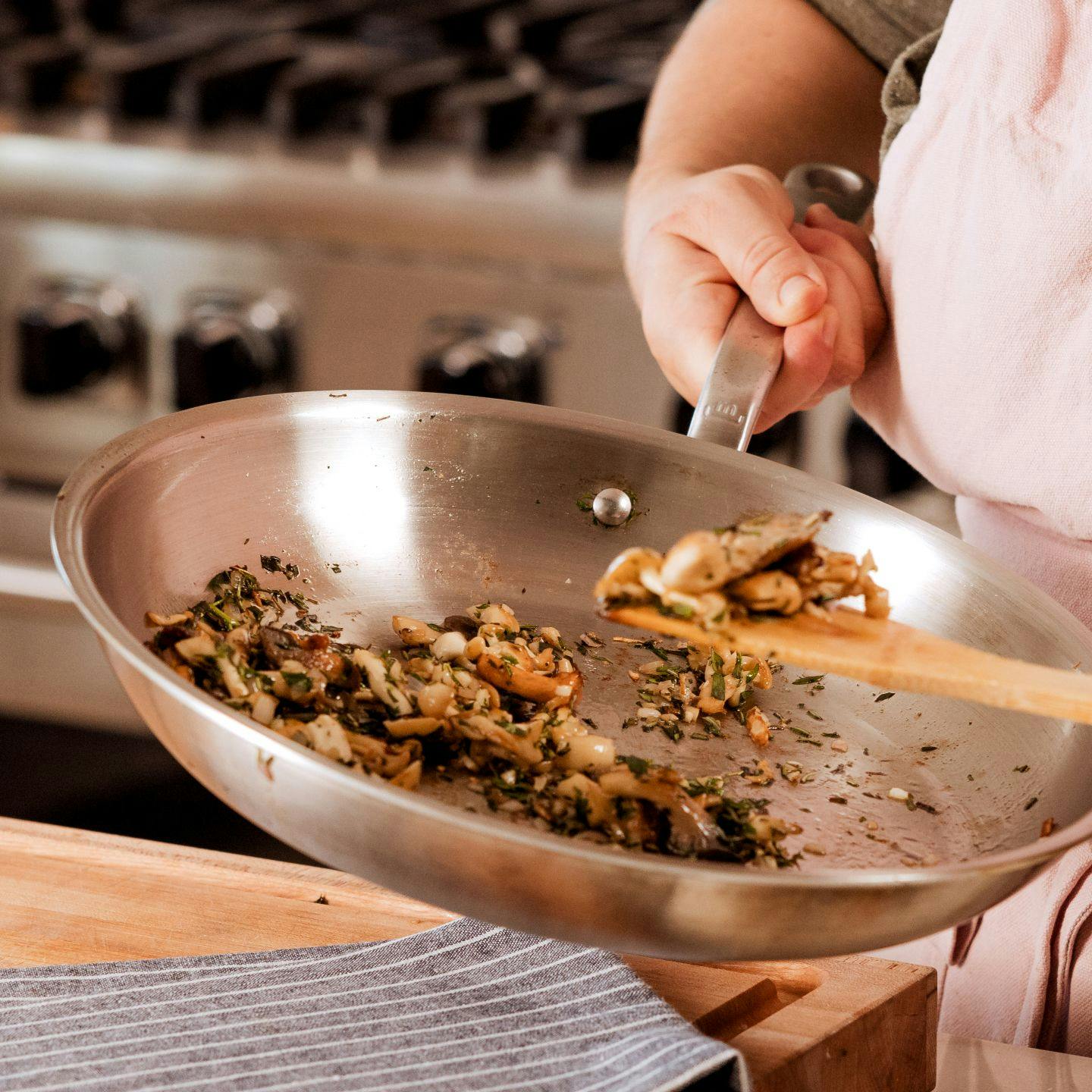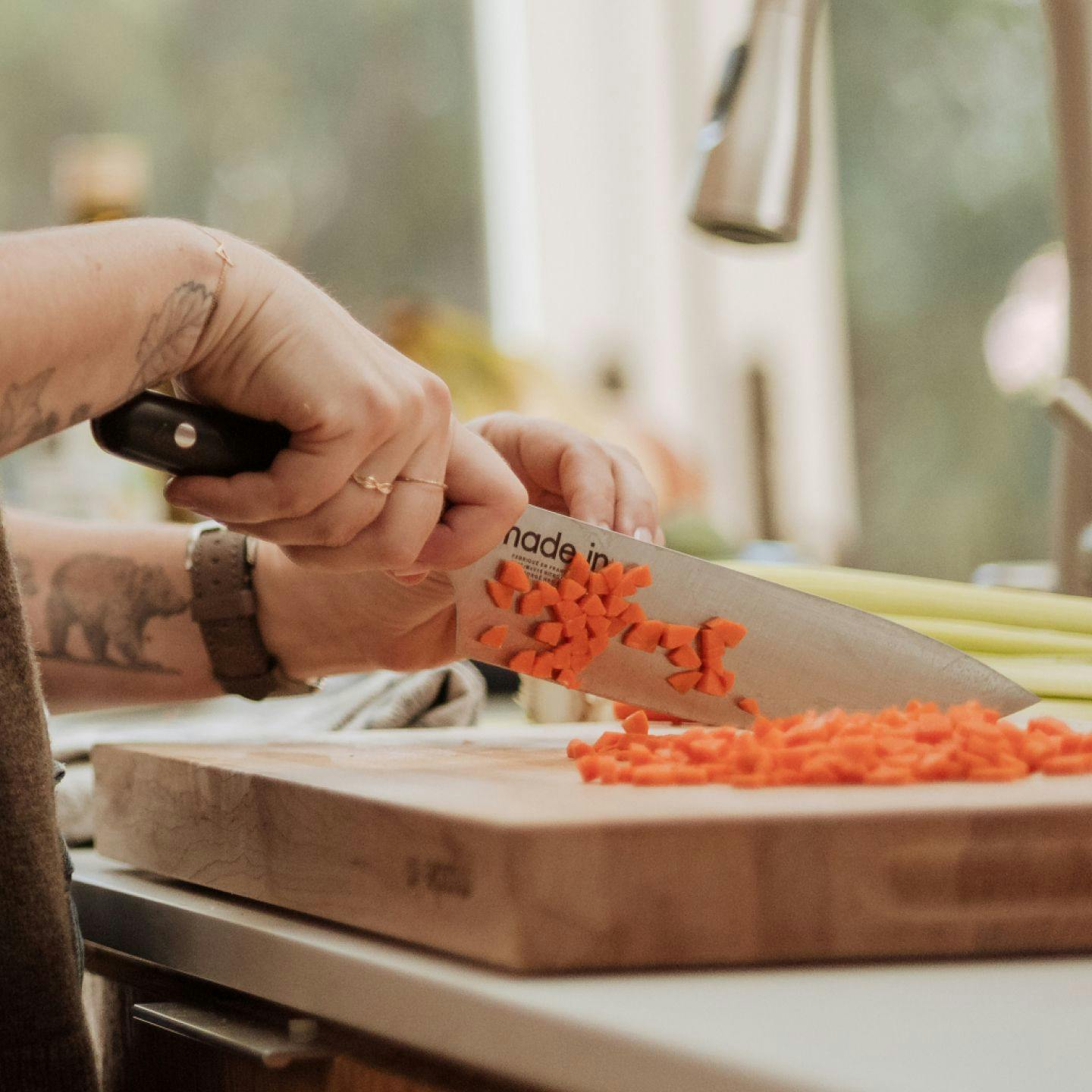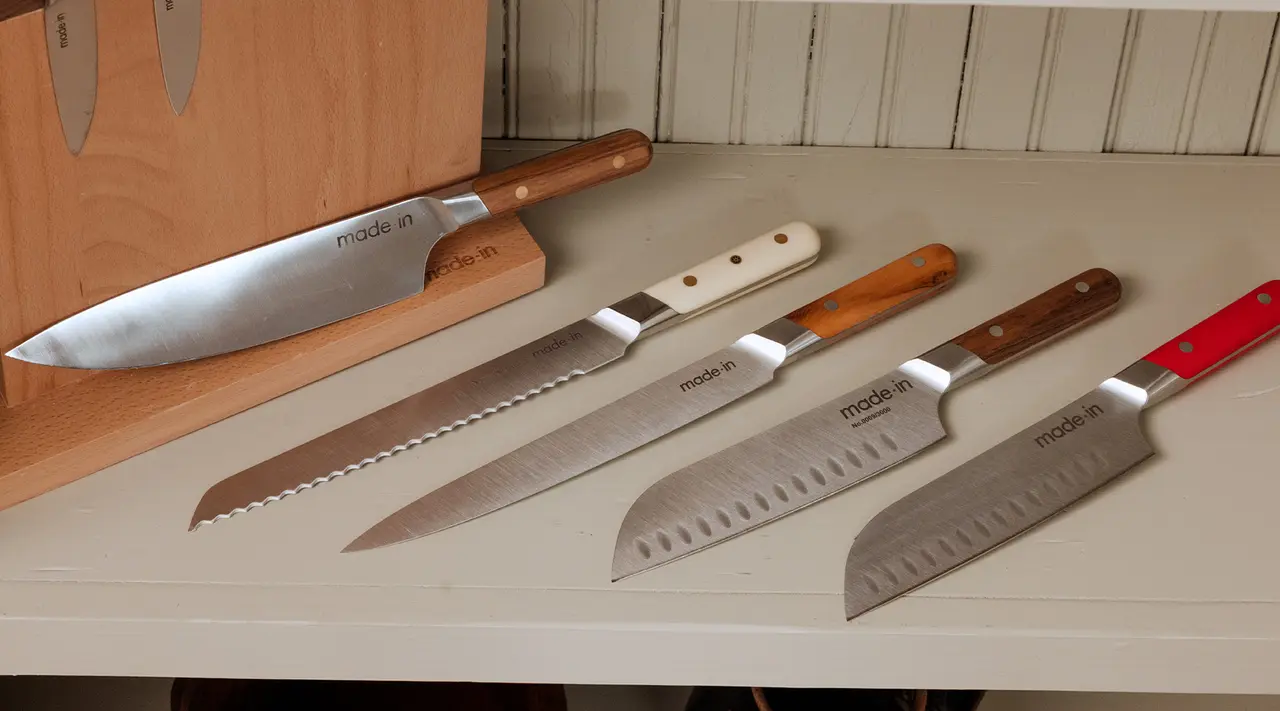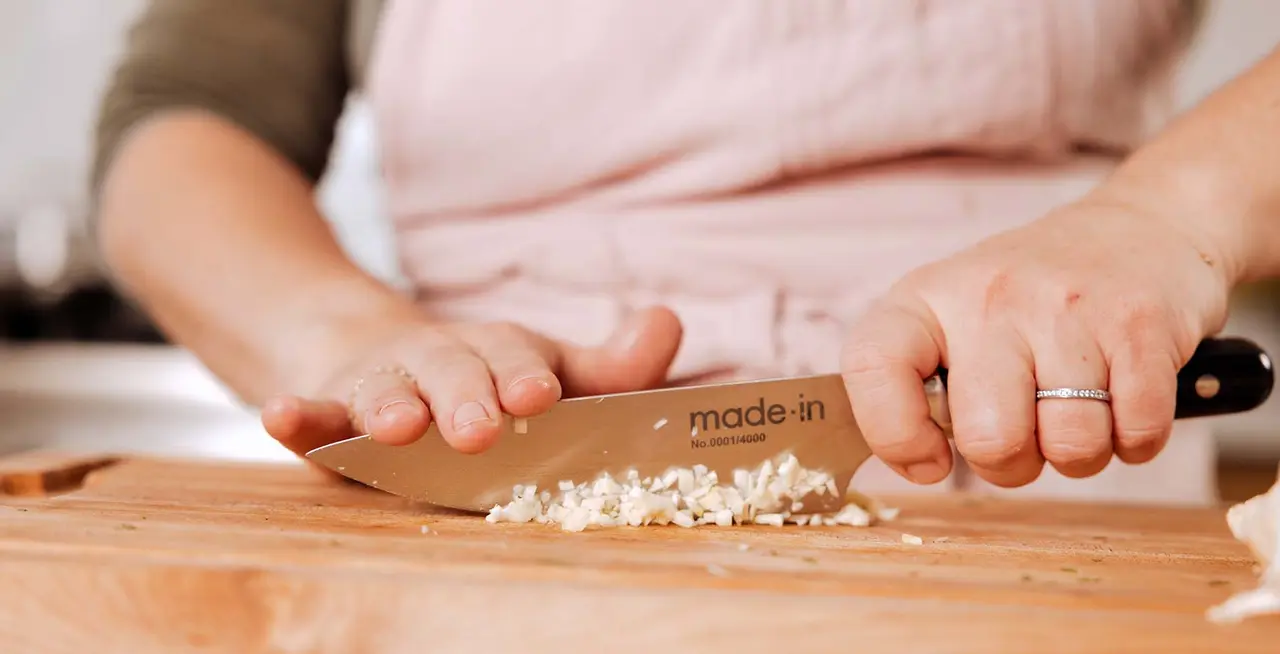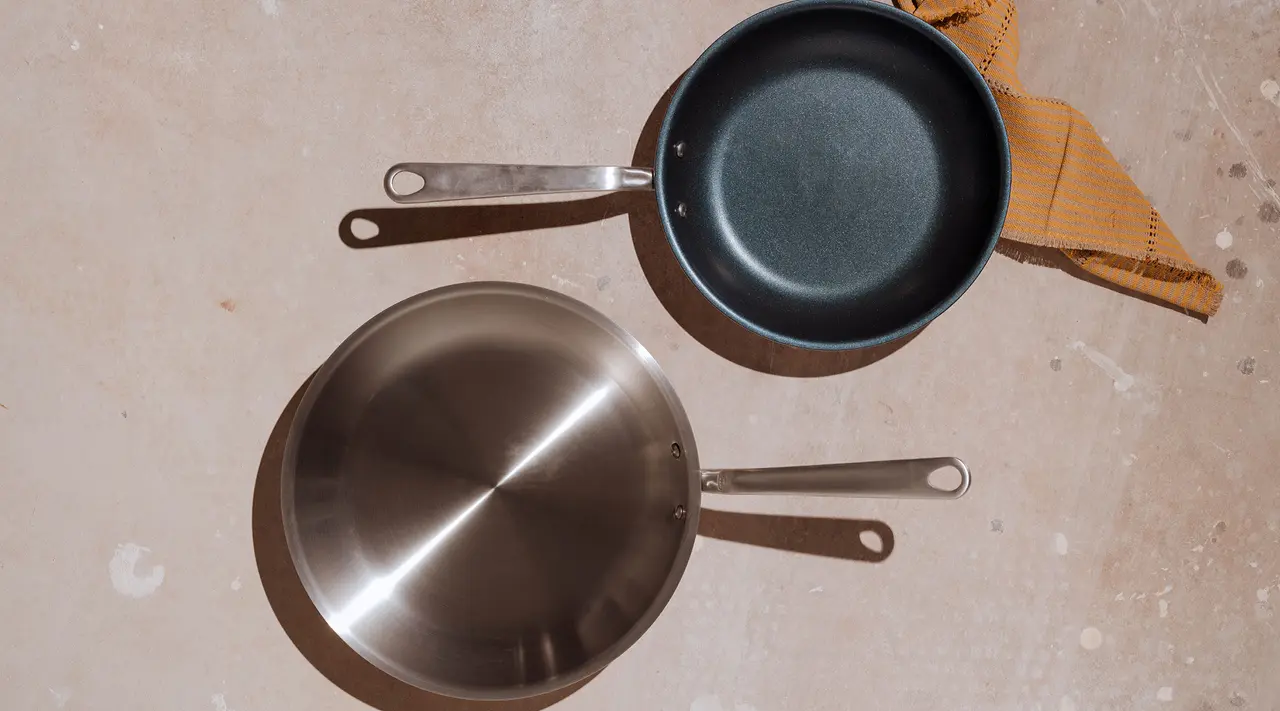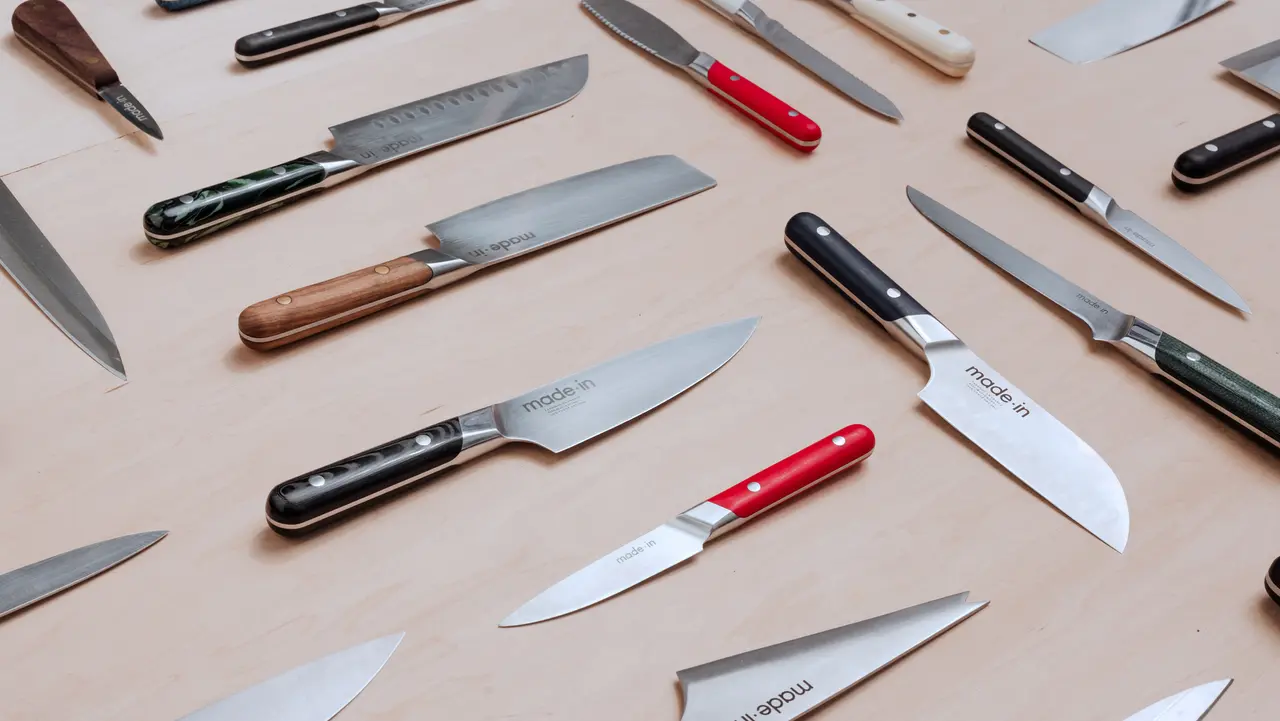If your spice organization leaves something to be desired, consider taking a cue from cooks in India and getting a masala dabba. The organizational tool is widely used across South Asia, offering prime spice organization. Since Indian and South Asian cuisine expertly uses many types of spices, the masala dabba offers a way to organize the key spices—unique to each cook and kitchen—used most frequently, all contained in a tidy box that is easy to store.
Made in India from stainless steel, our Masala Dabba is part of our growing South Asian cookware collection, curated in collaboration with editor and food authority Khushbu Shah. While working on her upcoming cookbook (of the same name as the collection), Shah realized that finding high-quality South Asian cookware in the United States is not as easy as it could be, so she approached us to make a variety of high-quality cooking tools.
A masala dabba is one of the most basic yet essential pieces in the Indian kitchen—and it deserves a place in your own home, no matter the type of cuisine you cook.
What Is a Masala Dabba?
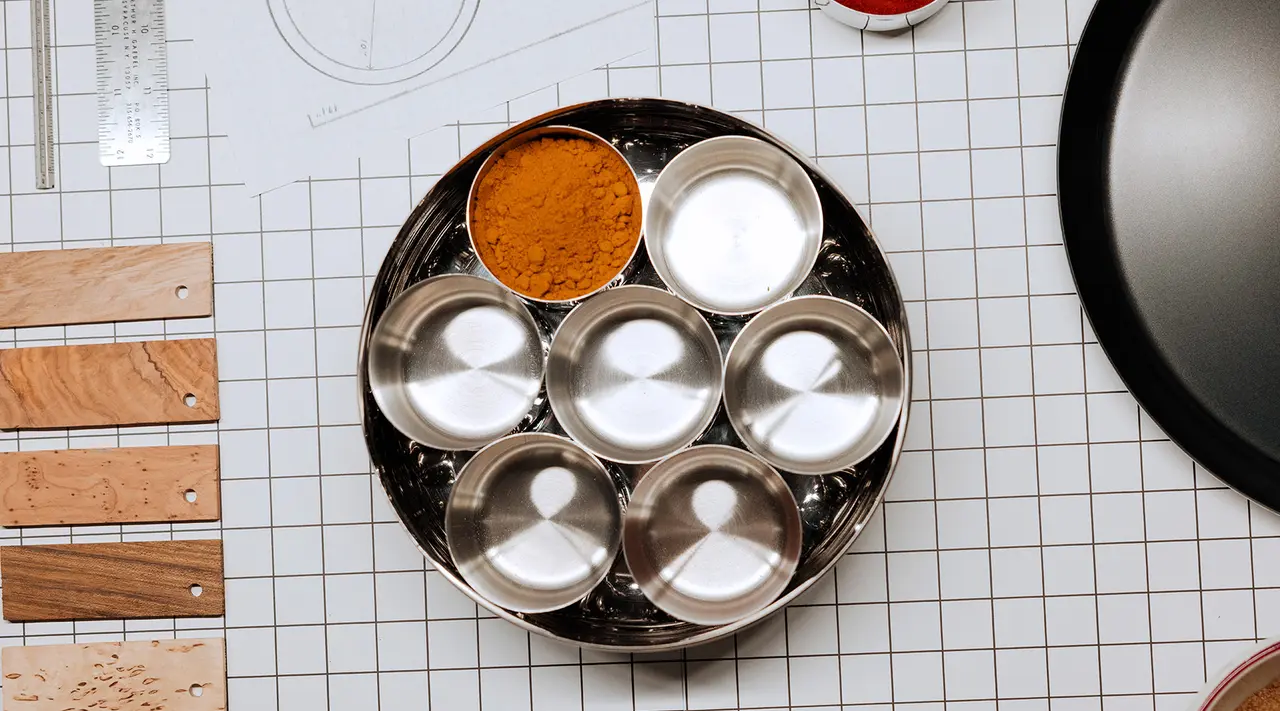
A masala dabba can come in many shapes and sizes, though they’re typically round or square, with flat bottoms and a lid. Inside they contain up to seven katoris (small bowls), nestled inside to hold individual spices. Our round 8-inch Masala Dabba comes with seven katoris, a small spoon used for scooping out your spices, and one lid that fits snugly over the entire masala dabba—meaning you can quickly remove one lid to reveal your spices. These spices can be whatever you want, but they’re meant to be ones you reach for most often.
“The masala dabba, a veritable icon of domesticity, is not reserved for special spices,” writes Priyadarshini Chatterjee in a post on the single-origin spice company Diaspora Co.’s website. “Instead, it is meant for essentials that go into every meal turned out of an Indian kitchen. Its indispensability rides primarily on utility and convenience.”
Our stainless steel masala dabba heralds back to tradition started in the mid 20th century, but the first masala dabbas were probably wooden, as author and perfume maker Jahnvi Lakhota Nandan explains in Chatterjee’s post. You might also see vintage masala dabbas made from brass, cast iron, and copper. Modern stainless steel masala dabbas are lightweight, durable, and easy to clean.
Understanding the Role of Masala Dabba in Indian Cuisine
A masala dabba makes it easy to keep your most-used spices organized and at the ready—no need to dig around a spice cabinet or drawer when your cumin and chile flakes are right there. Your spices’ flavor will diminish with age, so keeping them front and center, within eyesight, is a clever way to help yourself use them more often. The small size of the katoris also means that only a small amount of spices are exposed to air and elements (aka things that make spices lose their potency more quickly), so you can keep the refill bag of spices sealed and in a dark space to preserve their aroma and flavor.
The spices you add to your masala dabba are up to you (more on that below). Even across South Asian kitchens, with such a great diversity of cuisine across regions, these spices vary greatly. Some cooks will have one masala dabba for whole spices and another for ground spices, for example. Others will have individual spices like cumin, coriander, or turmeric, while some will include masalas (spice blends) like garam masala or chaat masala. The possibilities are literally endless.
How to Use a Masala Dabba
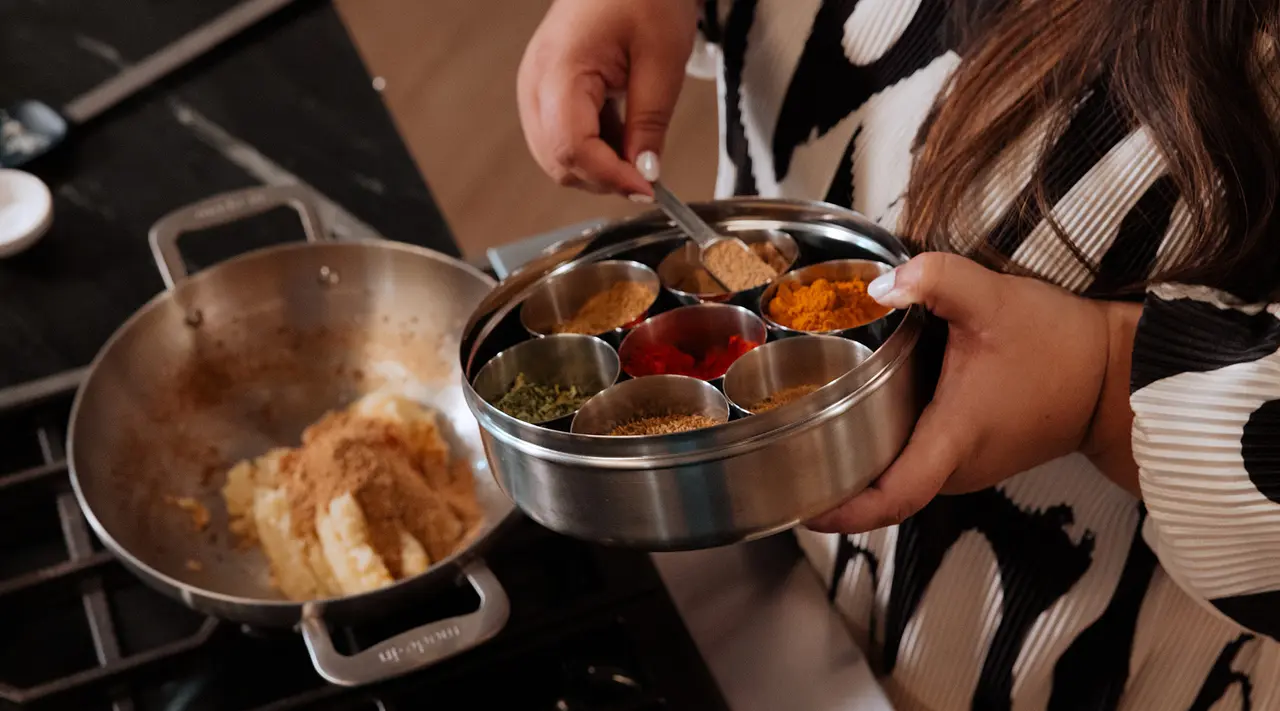
Think of the seven spices you reach for the most: those are the ones you should add to your masala dabba. It’s perfectly fine to start out with the spices you aspire to use the most, but it’s good practice, after a month or so of home-cooked meals, to check back in and see what you’re actually using. Adjust the spices accordingly, and top off any that need it.
If you have the counter space, you can keep your masala dabba out—but like any herbs and spices, make sure it’s not too close to your stove so that the contents aren’t exposed to heat. Otherwise, keep it front and center in a cupboard, drawer, or pantry—anywhere where it’s convenient to grab come dinnertime.
Since you’re not cooking with your masala dabba, maintaining and cleaning should be easy. If you notice any grimy patches in the katoris or the larger bowl, remove the spices and wash them with warm, soapy water. For particularly tough residue (unlikely, but you never know!), tackle the stains with Stainless Steel Cleaner or a mix of baking soda and vinegar or boiling water and vinegar. Check out our guide to cleaning stainless steel cookware for more pointers.
How to Incorporate a Masala Dabba Into Your Cooking
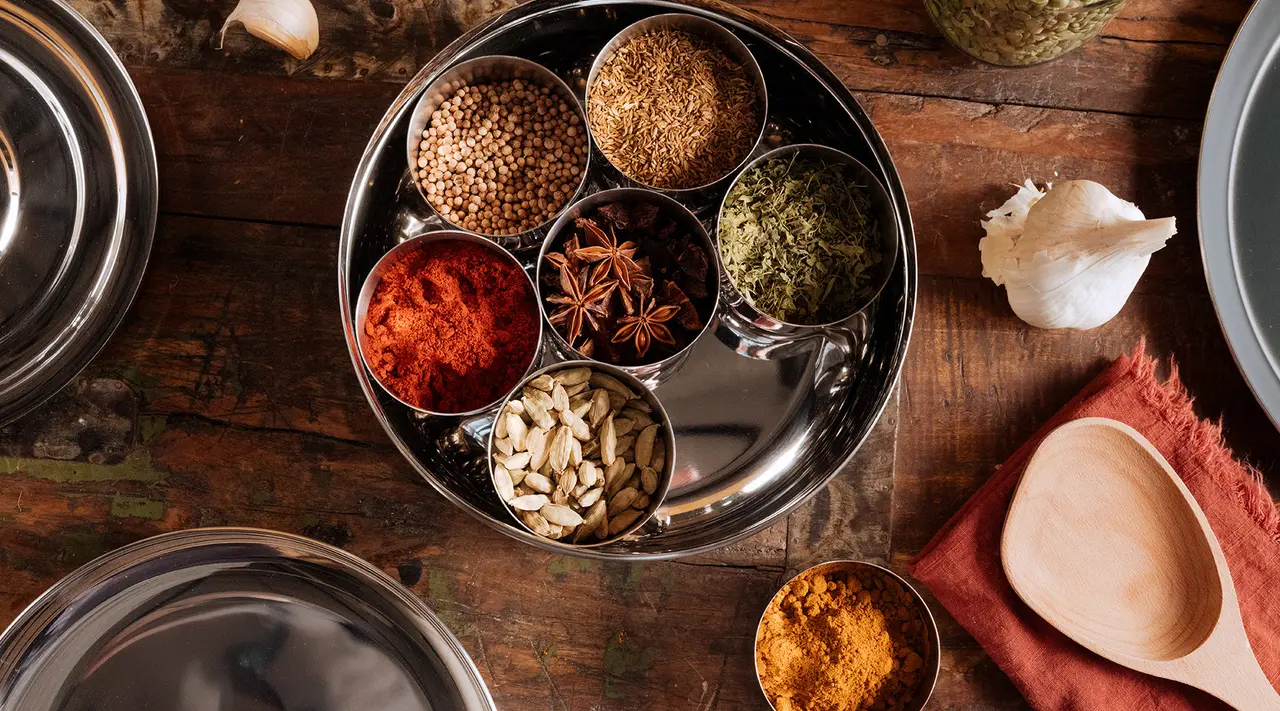
If you’d like to cook more Indian and South Asian meals at home, then a masala dabba would be especially appropriate to add to your kitchen tools. In that case, you might consider filling your masala dabba with turmeric, cumin, coriander, chile powder/flakes, black mustard seeds, cardamom, and salt. Put the salt in the middle, since you should be reaching for that most often—if it’s in the middle, it’s visually more accessible.
Even if you cook a variety of cuisines beyond South Asian, a masala dabba provides a unique and excellently designed way to reign in your spices and stay organized. Are you into Mexican food? Fill the masala dabba with cumin, coriander, cinnamon, various ground or whole chiles (small chiles de árbol would fit nicely), Mexican oregano, and salt—always salt!
More into East Asian cooking? Add cloves, cinnamon, fennel seeds, star anise, a type of numbing peppercorn (such as Sichuan or Sansho), and chiles, to start. Even a few spice blends, like everything bagel or a flaky finishing salt, would be right at home.
Ready to Shop?
The masala dabba is essential in South Asian kitchens, but its clever design has a place no matter the cuisine you’re cooking. Add one to your home and browse the rest of our Amrikan Collection, featuring two other classic South Asian cooking tools made in collaboration with Khushbu Shah.
